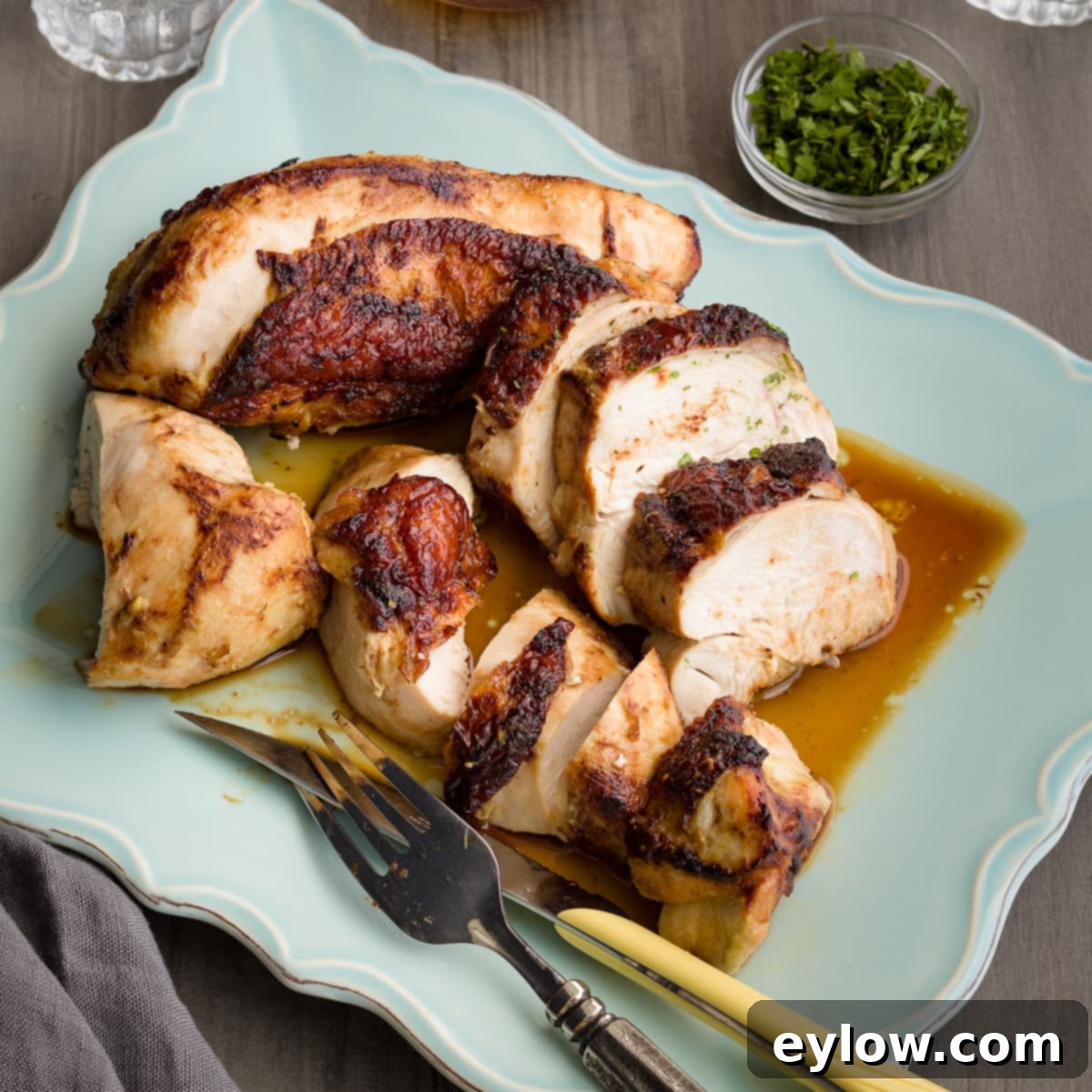Authentic Thai Lemongrass Chicken: A Zesty, Aromatic Culinary Journey
Embark on a delightful culinary adventure to the vibrant flavors of Southeast Asia with this exquisite Thai Lemongrass Chicken recipe. Renowned as a cornerstone ingredient in Thai and Vietnamese cooking, the wonderfully aromatic lemongrass infuses this succulent roast chicken with a bright, citrusy essence, beautifully complemented by a subtle hint of warming ginger. This dish promises a captivating fusion of sweet, sour, salty, and savory notes, characteristic of the region’s beloved cuisine.
Preparing this aromatic chicken is surprisingly simple. Begin by marinating the chicken breasts for a few hours, or ideally, overnight, allowing the potent flavors to deeply penetrate the meat. Once marinated, the chicken is perfectly poised for roasting to golden perfection. The result is a tender, flavorful main course that’s perfect for a weeknight dinner or a special gathering. Plus, any leftover chicken transforms beautifully into a vibrant chicken salad, offering a refreshing second meal option.
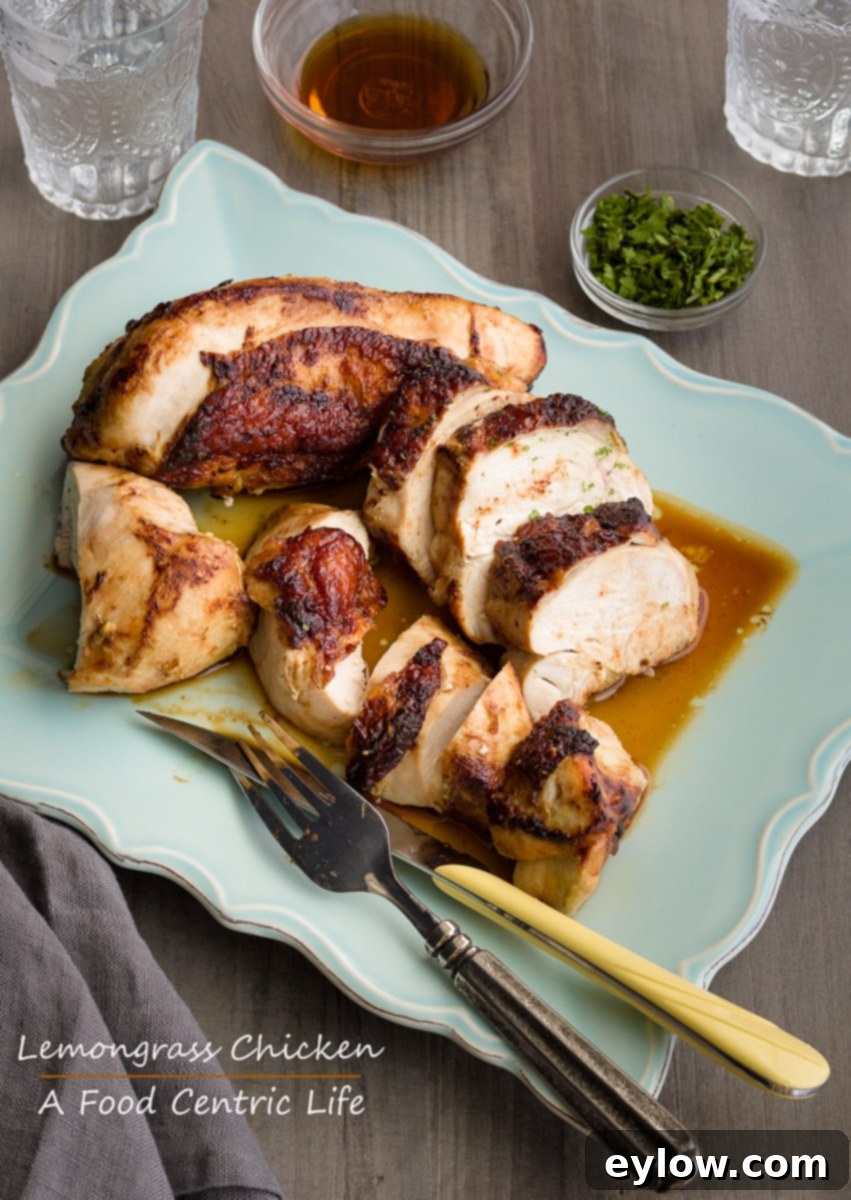
Lemongrass: An Essential Exotic Herb for Authentic Asian Flavors
If you’ve ever encountered lemongrass in the produce aisle of your local grocery store or an Asian market and wondered about its culinary potential, now is the perfect time to bring some home and explore its magic. This “exotic grass,” as it’s often called, is a powerhouse of flavor, widely utilized across various cuisines for its unique aromatic qualities. Its versatility shines in countless dishes, from comforting soups and dynamic stir-fries to rich curries, refreshing teas, and, of course, flavorful marinades like the one in our Thai Lemongrass Chicken recipe.
Lemongrass is botanically a grass, yet it is used much like an herb due to its intense fragrance and flavor. Visually, it’s quite distinctive: thin, stiff, and somewhat spiky, with a pale, scallion-like base. The stalk is composed of multiple layers tightly wrapped around a central core. When preparing lemongrass for cooking, focus on the lower, paler, and softer part of the stalk, which holds the most aromatic oils. The skinnier, tougher top portion, if present, is generally discarded or used for steeping in broths or teas, then removed before serving, as it can be quite fibrous.
Beyond its culinary applications, lemongrass is also appreciated for its potential health benefits and is a common ingredient in traditional medicine and essential oils. It boasts antioxidant properties and is believed to have anti-inflammatory effects. Its bright, citrusy, and slightly minty aroma, with earthy undertones, adds an unparalleled depth to any dish, making it indispensable for achieving authentic Southeast Asian flavors.
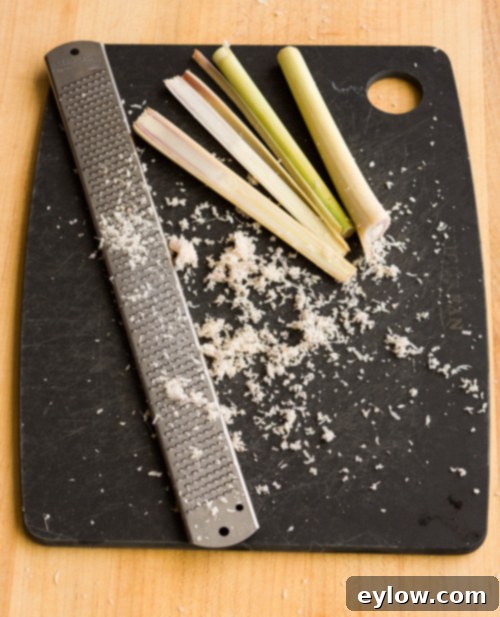
How to Select and Store Fresh Lemongrass
The quality of your lemongrass significantly impacts the flavor of your Thai Lemongrass Chicken. When shopping for this wonderful herb, look for stalks that appear fresh, firm, and are slightly moist, indicating good hydration. Avoid stalks that are dried out, yellowed, browned, or withered, as these have lost much of their essential oils and will deliver a weaker flavor.
Depending on your grocery store or Asian market, lemongrass might be sold in different states. Some retailers conveniently trim and peel off the tough outer layers for you, presenting only the tender, pale inner core ready for use. Others sell it in a more natural, unprocessed state. If you purchase it with the outer layers intact, you’ll need to peel away the fibrous, darker green layers until you reach the softer, more fragrant pale yellow-white interior. This tender part is what you’ll use for zesting or finely chopping.
To store fresh lemongrass, wrap the stalks tightly in plastic wrap or place them in an airtight container. They can be kept in the refrigerator for up to two to three weeks. For longer storage, you can finely zest or chop the usable portion of the lemongrass and freeze it in small, airtight bags or ice cube trays with a little water or oil. This way, you’ll always have this aromatic ingredient on hand to elevate your cooking.
Crafting the Perfect Thai Lemongrass Chicken Marinade
The heart of our Thai Lemongrass Chicken recipe lies in its vibrant and aromatic marinade. This concoction is designed to infuse the chicken with a complex tapestry of flavors that are both bright and deeply savory. We’ve carefully balanced traditional Southeast Asian ingredients to create a marinade that’s quick to prepare yet delivers profound results.
Our marinade begins with finely zested lemongrass, which provides that signature bright, citrusy, and subtly floral note. This is paired with fresh ginger, adding a warm, spicy counterpoint, and pungent garlic and shallot, building a robust aromatic foundation. For the savory base, we use Tamari, a gluten-free alternative to soy sauce, or coconut aminos for a soy-free option, contributing essential umami without wheat. A touch of agave sweetens the marinade slightly, balancing the other intense flavors, though liquid stevia drops can be used for a sugar-free alternative.
A truly authentic touch comes from Vietnamese fish sauce, also known as nuoc mam. If you’re new to fish sauce, don’t be deterred by its initial strong aroma; it’s a foundational ingredient in many Asian cuisines and undergoes a magical transformation when cooked or mixed into a marinade. It imparts an incredible depth of savory, umami flavor that is irreplaceable, without leaving a “fishy” taste. The brand “Red Boat” is highly recommended for its all-natural quality, absence of preservatives or MSG, and its first-pressed purity, akin to extra virgin olive oil. A pinch of red pepper flakes is optional but adds a welcome kick for those who enjoy a bit of heat. Finally, coconut oil and fresh lime juice complete the marinade, adding richness and a final bright tang.
Marinating the chicken allows these wonderful flavors to meld and tenderize the meat. The longer the chicken marinates, the more intense the flavors will become, ensuring every bite of your Thai Lemongrass Chicken is bursting with taste.
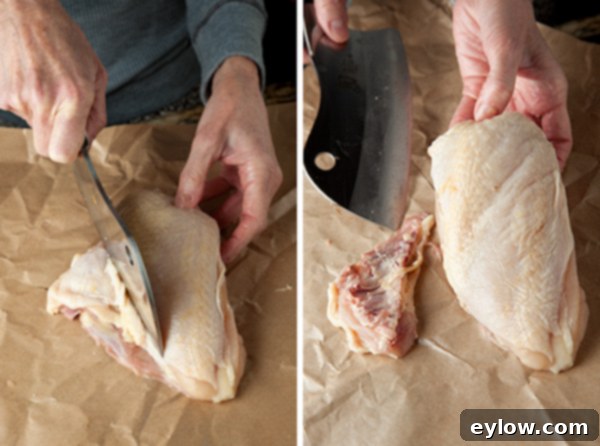
Preparing Chicken Breasts for Optimal Flavor and Texture
Proper preparation of your chicken breasts is key to achieving a delicious and evenly cooked Thai Lemongrass Chicken. Start by trimming any small side ribs or excess fat from the bone-in chicken breasts. This ensures a cleaner cut and helps the chicken cook more uniformly. While bone-in, skin-on chicken breasts are recommended for maximum flavor and juiciness, boneless, skinless chicken breasts can also be used; just adjust cooking times accordingly to prevent drying out.
Once trimmed, the chicken is ready for its aromatic bath. Place the prepared chicken breasts into a large, sealable plastic bag or a shallow, non-reactive dish. Pour the prepared lemongrass marinade over the chicken, ensuring all pieces are thoroughly coated. If using a zip-top bag, press out as much air as possible before sealing to maximize contact between the chicken and the marinade. Refrigerate the chicken for at least a few hours, or ideally, overnight, to allow the flavors to truly infuse the meat. This marination period not only tenderizes the chicken but also locks in the bright, zesty notes that define this dish.
When you’re ready to cook, simply drain the chicken, discarding the used marinade. The chicken is now ready to be seared and roasted to perfection, promising a deeply flavorful and tender meal.
Zesting vs. Chopping Lemongrass: The Microplane Advantage
Many recipes will instruct you to simply chop lemongrass, but for this Thai Lemongrass Chicken, we recommend a superior method: zesting. While chopping can be effective, it often leaves woody, fibrous chunks that can be unpleasant to chew. Lemongrass is naturally quite fibrous, and even finely chopped pieces can retain a tough texture.
The secret to unlocking the full aromatic potential of lemongrass in a smooth, integrated way is to use a microplane zester. This specialized tool allows you to grate the lemongrass into extremely fine, almost paste-like strands. This ultra-fine texture ensures that the potent citrusy, gingery flavors are thoroughly distributed throughout the marinade and subsequently into the chicken, without any of the undesirable fibrousness. You’ll achieve a far more intense and harmonious flavor profile in every bite.
Typically, one medium stalk of lemongrass should yield approximately 3 tablespoons of finely zested lemongrass, which is the perfect amount for this recipe. If you find yourself with extra lemongrass stalks, don’t let them go to waste! Zest them finely and then freeze the zest in an airtight container or bag. This makes it incredibly convenient to add a burst of fresh lemongrass flavor to other dishes at a moment’s notice, without needing to process a whole stalk each time.
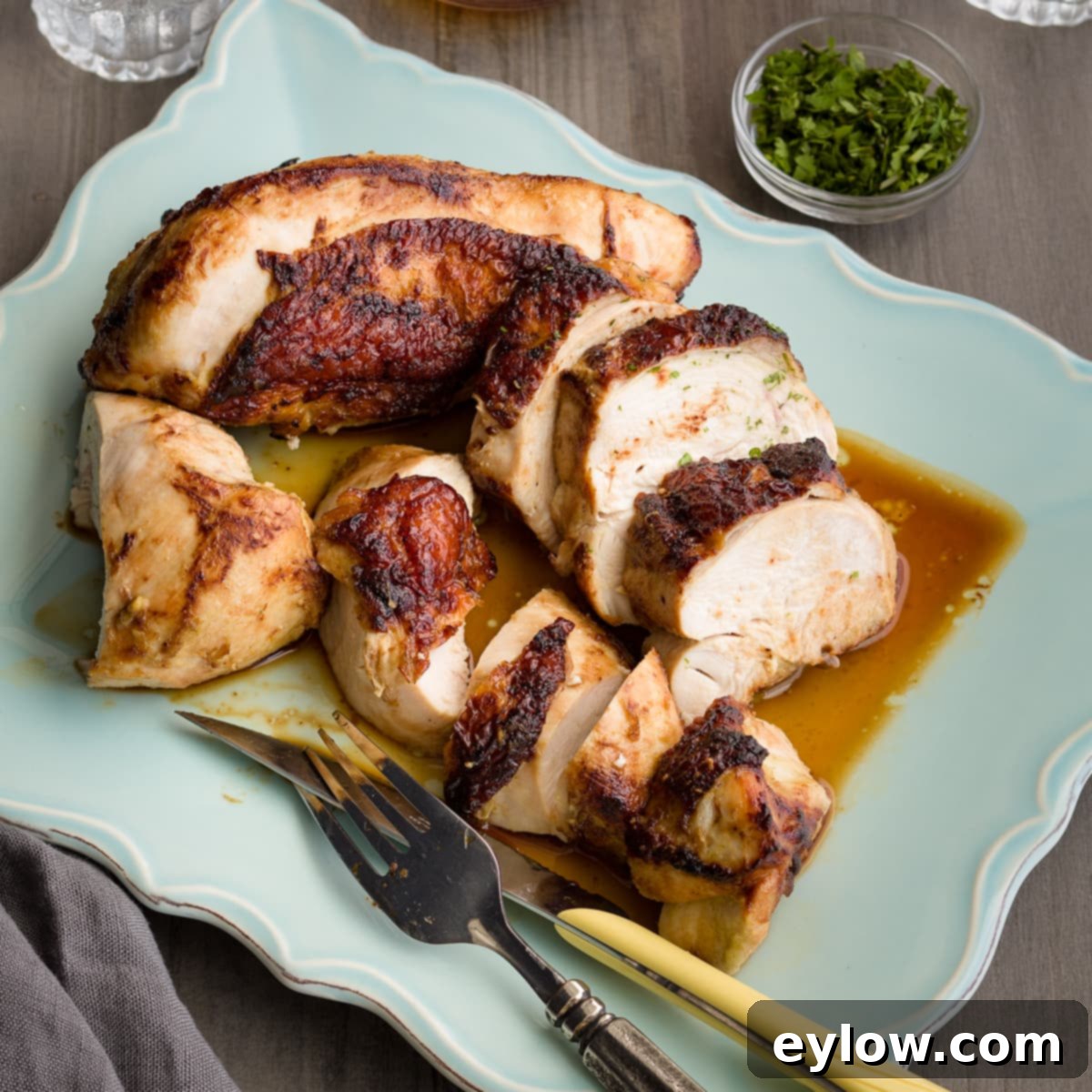
Beyond Chicken: More Creative Ways to Cook with Lemongrass
Lemongrass is an incredibly versatile ingredient, and its unique flavor profile can enhance a wide array of dishes beyond just this Thai Lemongrass Chicken recipe. Don’t limit your culinary imagination; explore these additional ideas to incorporate more of this aromatic herb into your cooking:
- **Elevate Your Soups**: Introduce a fresh, vibrant twist to classic comfort foods. Try adding finely zested lemongrass or a couple of 2-inch pieces (crushed to release their essential oils) to your chicken soup or any broth-based soup. The lemongrass will infuse the liquid with its bright notes. Remember to remove the larger pieces before serving for the best texture.
- **Zesty Chicken Salad**: Transform your everyday chicken salad by stirring in a tablespoon or two of fine lemongrass zest. It provides an unexpected and delightful burst of citrus and herbal notes that will awaken your palate and make your chicken salad anything but ordinary.
- **Thai Grilled Shrimp**: Adapt this very marinade for succulent Thai grilled shrimp. Shrimp requires less marination time; 30-45 minutes at room temperature is sufficient. Thread the marinated shrimp onto skewers and grill until perfectly cooked. Serve alongside fluffy jasmine rice for a complete and exquisite meal.
- **Aromatic Stir-Fries**: Towards the end of cooking, just before serving, incorporate lemongrass zest into your ginger stir-fries. This ensures its delicate flavor isn’t cooked away. A sprinkle of fresh chopped cilantro added at the same time will create a harmonious explosion of aromas and tastes.
- **Refreshing Lemongrass Tea**: For a wonderfully soothing and aromatic beverage, steep thin slices or crushed pieces of lemongrass in hot water. You can enjoy it hot or chill it for a refreshing iced tea. Adding a slice of ginger or a squeeze of lime can further enhance its invigorating qualities. This simple tea is a great way to enjoy the calming and digestive benefits of lemongrass.
- **Coconut Curries**: Lemongrass is a natural partner for coconut milk. Add bruised stalks to your favorite coconut curry recipes for an authentic depth of flavor. The creaminess of the coconut milk beautifully balances the sharp notes of the lemongrass.
- **Infused Oils or Vinegars**: Gently warm sliced lemongrass in a neutral oil (like canola or grapeseed) or steep it in white vinegar to create your own homemade infused oils or vinegars. These can be used in dressings, dipping sauces, or as a finishing drizzle for various dishes.
With these ideas, you can unlock the full potential of lemongrass and bring exciting, authentic Asian flavors to your kitchen with ease.
📖 Recipe
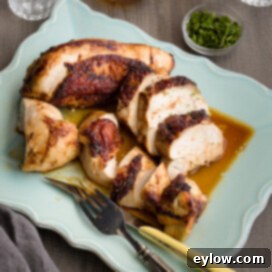
Thai Lemongrass Chicken
Sally Cameron
Pin Recipe
Ingredients
- 4 bone-in chicken breasts preferably organic
- 3 tablespoons fine lemongrass zest about 1 stalk lemongrass
- 1 medium shallot chopped fine
- 3 large garlic cloves chopped or zested fine
- 1 tablespoon low-sodium Tamari or coconut aminos for soy-free
- 1 tablespoon agave or use liquid stevia drops
- 2 tablespoons Asian fish sauce
- 1 pinch red pepper flakes if you like heat, optional
- 3 tablespoons plus 1 tablespoon coconut oil for the pan
- 2 tablespoons fresh chopped cilantro or flat leaf parsley
- 1 tablespoon jarred organic ginger puree or finely zested fresh ginger
- 1 lime juiced
Instructions
Trim Chicken Breasts
-
Pre-heat oven to 375°F (190°C). Prepare a rimmed baking sheet by lining it with parchment paper or foil for easy cleanup. Carefully trim any small rib bones or excess fat from the chicken breasts. Refer to the image in the post for guidance on proper chicken preparation.
Marinate Chicken
-
In a bowl or large measuring cup, combine all the remaining marinade ingredients (lemongrass zest, shallot, garlic, Tamari/coconut aminos, agave, fish sauce, red pepper flakes, 3 tablespoons coconut oil, cilantro, ginger puree/fresh ginger, and lime juice). Whisk them thoroughly to create a cohesive marinade. Pour this flavorful mixture into a large zip-top bag with the trimmed chicken breasts. Squeeze out as much air as possible before sealing the bag to ensure the chicken is fully submerged. Refrigerate the chicken for at least 2 hours, or for best results and deeper flavor, marinate overnight. Once marinated, drain and discard the used marinade.
Cook Chicken
-
Heat a large stainless steel or cast iron fry pan, sauté pan, or skillet over medium heat. Add the reserved 1 tablespoon of coconut oil to the pan. Once the oil is shimmering, carefully place the chicken breasts, skin-side down, into the hot pan. Sear until the skin is beautifully golden brown and crispy, about 5-7 minutes. Flip the chicken breasts and cook for another 1-2 minutes on the other side. Transfer the seared chicken breasts to the prepared rimmed baking sheet. Roast in the pre-heated oven for approximately 30 minutes, or until a digital meat thermometer inserted into the thickest part of the chicken (without touching bone) registers 160-165°F (71-74°C). Cooking time may vary depending on your oven and the thickness of the chicken breasts. Allow the chicken to rest for a few minutes before serving to let the juices redistribute.
